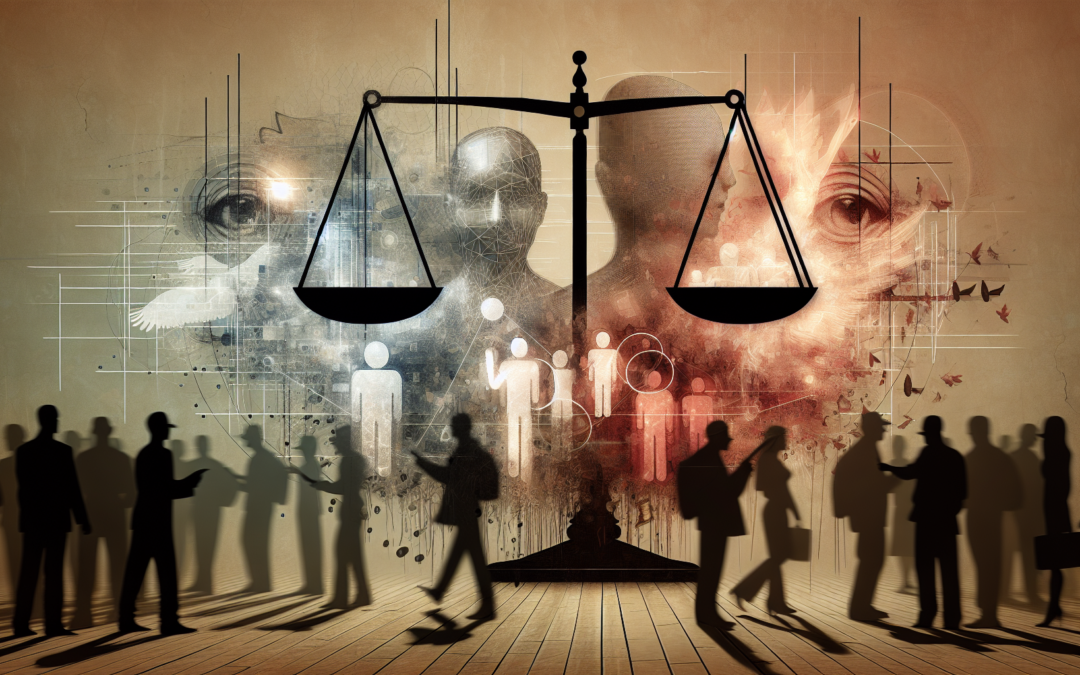The Guardians on Trial: When Passion for the Constitution Meets the Reality of Law Enforcement
In the age of digital media, accountability has found new expression through the lenses of citizen cell phones and the ardent mission of self-proclaimed First Amendment Auditors. These citizens endeavor to test the boundaries of free speech, challenging government transparency. However, there is another side to this story, one where the protectors—the police—feel cornered, critiqued, and concerned. Beneath the fiery engagements and viral videos lies a profound question: What does it mean to be an officer in an era when every decision can turn into a viral moment?
Every morning, officers put on their uniforms and step out into a sea of expectations: to serve, protect, and uphold the law while maintaining the delicate balance of respect and authority. Yet how can this be accomplished when one’s every decision is scrutinized in real-time, not just by the local community, but potentially by millions around the world?
To understand this complex relationship, we must walk in officers’ shoes for a moment. Their task is far from ordinary; it’s ardently stressful, occasionally dangerous, and increasingly public. The ever-watchful eyes of First Amendment Auditors can feel less like open dialogue and more like intentionally provocative confrontations. For many officers, these interactions aren’t perceived as pure acts of vigilance but rather targeted actions intended to elicit the very conflict that auditors claim to uncover and decry.
In recent years, law enforcement has been catapulted into the public arena, their every move calculated, often judged by a standards manual written in pixels rather than policy. Auditors arrive at scenes with cameras already running, their questions more geared towards generating friction than seeking answers. For officers, this presents an existential threat, like facing an unending trial where the jury lacks both consistency and empathy.
Some officers recount engaging with auditors who brandish their tickets to freedom with hostility – words intentionally sharp enough to escalate and incite. It is not an honest pursuit of transparency they see but an orchestrated performance designed to garner clicks and views. Contriving an adversary out of those sworn to protect rubs against the fibers of their oath, creating a chasm filled with distrust.
Yet, it’s not that officers oppose transparency. The very fabric of their service is built upon the tenets of democratic liability; accountability is as essential to justice as the oath they take. What provokes outrage is the methodology employed—camera lenses poised for reactivity, constantly seeking to capture an errant tongue slip or perceived overreach. Even measured reactions are vulnerable to digital misinterpretation—a mosaic created from snippets, devoid of full context or explanation.
The repercussions are significant. Each encounter with First Amendment Auditors can leave officers demoralized, disheartened, and sometimes publicly defamed. The internet is a ruthless critic—fleeting interpretations solidifying into an indelible perception. Videos stripped of context remain engraved in the public consciousness long after the smartphone blinked off. Law enforcement careers can be cast into doubt with few facts verified, leaving families and communities at odds.
Even more detrimental are the implications for recruitment and morale. As policing careers appear increasingly fraught and vilified, potential recruits may be dissuaded from joining ranks already struggling to maintain strength. Existing staff grapple with unprecedented scrutiny, often doubting their own futures. As a society, we must question what becomes of our public safety institutions when the bulwark of community trust deteriorates under perpetual critique.
As the public and other stakeholders view The John Ligato Show’s episode on this issue, they might ponder where the equilibrium lies between transparency and torment, order and oversight. Is there space for understanding, or must these encounters always culminate in tension and distrust?
The conversation doesn’t—indeed cannot—end here. Dialogue fosters understanding, and mutual appreciation of different perspectives might cultivate solutions. Engaging with such audits might cry out for policy revisits, consideration of body cams currently employed in numerous police departments, the formulation of community dialogue initiatives, or workshops pushing forward empathetic policing combined with informed civic responsibility.
Listening lends ourselves a chance for deeper insight. Explore different perspectives on John Ligato’s diverse platforms, where insightful discussions promise to challenge assumptions; examine the agendas shaping behaviors and explore open mind gavelling out reconciliation instead of revilement.
Subtlety defines solutions while understanding displays true leadership. Bridged comprehension between First Amendment Auditors and law enforcement may demonstrate the potential for reinvigorating collective trust. Further your knowledge and engagement with the thoughtful discussions found within eclectic platforms.
As this dialogue continues, we stand at a crossroads, balancing constitutional freedom with practical security. Amid the intense scrutiny, a transcendent moment arises: An opportunity to redefine public safety that resonates with the dual accusation of robust rights and revered responsibilities, ceaselessly beckoning for acknowledgment and, profoundly, mutual respect.

Recent Comments